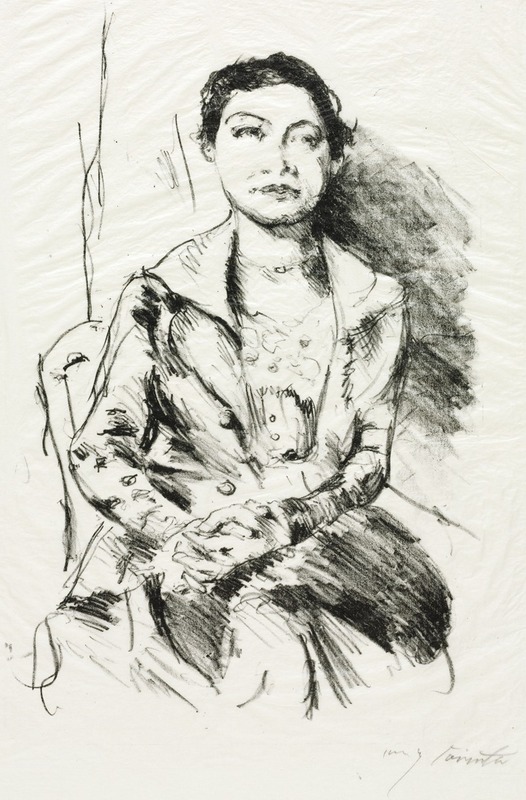
Portrait of a Young Woman
A hand-painted replica of Lovis Corinth’s masterpiece Portrait of a Young Woman, meticulously crafted by professional artists to capture the true essence of the original. Each piece is created with museum-quality canvas and rare mineral pigments, carefully painted by experienced artists with delicate brushstrokes and rich, layered colors to perfectly recreate the texture of the original artwork. Unlike machine-printed reproductions, this hand-painted version brings the painting to life, infused with the artist’s emotions and skill in every stroke. Whether for personal collection or home decoration, it instantly elevates the artistic atmosphere of any space.
Lovis Corinth's "Portrait of a Young Woman" is an exemplary work of art that showcases the distinctive style and technique of the German painter, who was a leading figure in the transition from Impressionism to Expressionism. Corinth, born in 1858 in Tapiau, East Prussia (now Gvardeysk, Russia), was a prolific artist whose work spanned various genres, including portraits, landscapes, and historical scenes. His ability to capture the essence of his subjects with bold brushwork and vibrant colors is evident in this particular portrait.
The painting, created in the early 20th century, reflects Corinth's mature style, characterized by a dynamic interplay of color and form. The subject of the painting, a young woman, is depicted with a sense of immediacy and vitality, a hallmark of Corinth's portraiture. The artist's use of loose, expressive brushstrokes and a rich palette imbues the portrait with a sense of movement and life, drawing the viewer into the emotional world of the subject.
Corinth's approach to portraiture was deeply influenced by his personal experiences and the broader artistic movements of his time. After studying at the Academy of Fine Arts in Munich and the Académie Julian in Paris, Corinth returned to Germany, where he became associated with the Berlin Secession, a group of artists who sought to challenge the conservative art establishment. His work during this period reflects a synthesis of Impressionist techniques and a burgeoning Expressionist sensibility, which can be seen in the emotive quality of "Portrait of a Young Woman."
The painting is notable for its psychological depth, a feature that Corinth often explored in his portraits. The young woman's gaze is direct and engaging, suggesting a narrative or inner life beyond the canvas. This ability to convey the complexity of human emotion is one of the reasons Corinth's portraits are highly regarded.
"Portrait of a Young Woman" also exemplifies Corinth's mastery of color. The artist employs a harmonious blend of warm and cool tones, creating a balanced composition that highlights the subject's features. The background, rendered with broad, fluid strokes, provides a subtle contrast to the more detailed depiction of the woman's face and attire, further emphasizing her presence within the frame.
Throughout his career, Corinth faced numerous personal and professional challenges, including a debilitating stroke in 1911 that temporarily affected his ability to paint. However, he continued to work with determination, adapting his style to accommodate his physical limitations. This resilience is reflected in the vigor and intensity of his later works, including this portrait.
Lovis Corinth's "Portrait of a Young Woman" remains an important piece within his oeuvre, illustrating his contribution to the development of modern art in Germany. The painting is a testament to his skill as a portraitist and his ability to capture the complexity of human emotion through the medium of paint. Today, Corinth's works are held in high esteem and can be found in major art collections and museums around the world, where they continue to inspire and engage audiences.


















